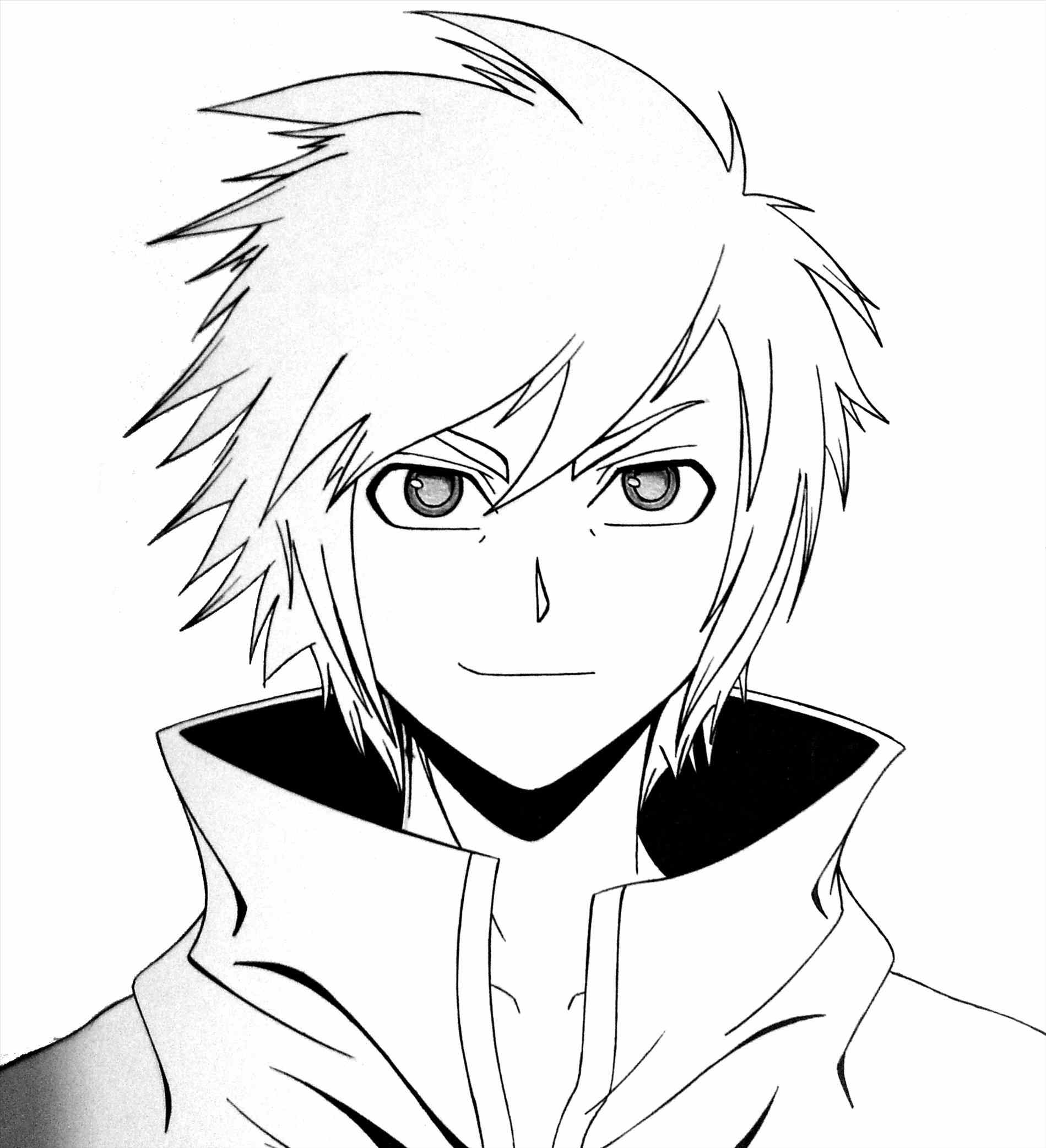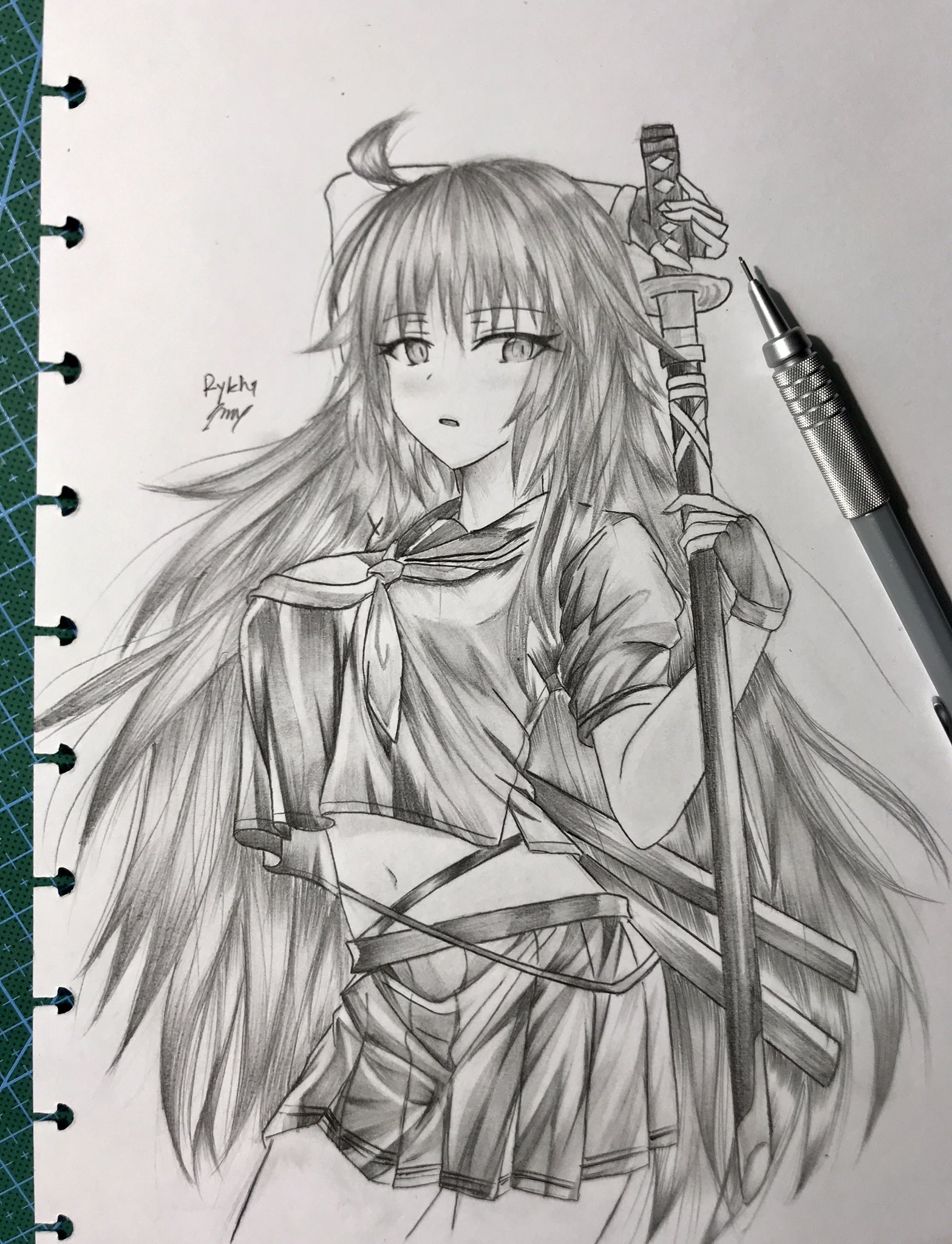Are you ready to dive into the world of anime sketches? Whether you're a complete beginner or someone looking to refine your skills, this article is your ultimate companion. Anime sketches have become a global phenomenon, captivating artists and fans alike with their unique style and creativity. In this guide, we’ll explore everything you need to know about creating stunning anime sketches and taking your art to the next level!
Let’s face it, anime sketches are more than just drawings—they're a form of expression. From the delicate lines of a character’s hair to the intricate details of their eyes, every stroke tells a story. If you’ve ever wondered how professional artists create those breathtaking anime masterpieces, you’re in the right place. We’ll break it down step by step, so even if you’ve never picked up a pencil before, you’ll feel confident enough to give it a shot.
Now, before we dive deep into the nitty-gritty of anime sketching, let’s get one thing straight: practice makes perfect. Sure, some people are naturally gifted, but most artists you admire today have spent years honing their craft. The good news is, with the right guidance and a bit of dedication, you can achieve amazing results too. So, grab your sketchbook, sharpen your pencils, and let’s get started!
Read also:Dollar Paparelo The Ultimate Guide To Understanding And Mastering This Financial Phenomenon
What Exactly Are Anime Sketches?
Anime sketches refer to the initial drawings or outlines that serve as the foundation for anime characters. These sketches are essential in bringing characters to life, capturing their unique features and expressions. Unlike traditional sketches, anime art has its own set of rules and techniques that make it stand out. From exaggerated proportions to dynamic poses, anime sketches are all about creativity and imagination.
For instance, anime eyes are often large and expressive, conveying emotions that words cannot. Hair styles are bold and colorful, adding personality to each character. And don’t forget the iconic chibi style, where characters are drawn in a cute, simplified form. All these elements combine to create the distinctive look we all love.
Why Anime Sketches Are So Popular
There’s no denying the popularity of anime sketches. But why exactly do they captivate so many people? For starters, anime art is incredibly versatile. It allows artists to experiment with different styles, from realistic to cartoonish, and everything in between. Plus, the vibrant colors and dynamic action scenes make anime sketches visually appealing.
Another reason is the community. Anime enthusiasts around the world share their work, offer feedback, and inspire each other. This supportive environment encourages growth and innovation, making anime sketching a truly rewarding experience. Whether you’re drawing for fun or aspiring to become a professional artist, the anime community has something for everyone.
The Rise of Anime Culture
Anime culture has exploded in recent years, thanks in part to streaming platforms and social media. Shows like "Naruto," "One Piece," and "Attack on Titan" have gained massive followings, inspiring countless fans to pick up a pencil and try their hand at sketching. The internet has also made it easier than ever to access tutorials, reference images, and art communities, further fueling the popularity of anime sketches.
Getting Started with Anime Sketches
If you’re new to anime sketching, don’t worry—you don’t need to be a pro right away. Start with the basics and gradually build your skills. Here are a few tips to help you get started:
Read also:Seaforth Landing Your Ultimate Guide To A Breathtaking Destination
- Invest in good quality pencils and sketchbooks.
- Study anatomy to understand proportions and body structure.
- Practice drawing simple shapes and lines to improve control.
- Experiment with different shading techniques to add depth.
- Don’t be afraid to make mistakes—they’re part of the learning process!
Remember, everyone starts somewhere. Even the most skilled artists were once beginners. The key is to keep practicing and pushing yourself to improve.
Essential Tools for Anime Sketching
Having the right tools can make a big difference in your art journey. Here are some essentials you’ll want to have:
- Pencils (HB, 2B, 4B, 6B)
- Eraser (kneaded and regular)
- Sketchbook or drawing pad
- Blending stumps or tortillons
- Reference images for inspiration
As you progress, you might also consider investing in digital tools like tablets and software. These can open up new possibilities and allow you to experiment with colors and effects.
Understanding Anime Character Proportions
One of the most important aspects of anime sketches is getting the proportions right. Unlike realistic art, anime characters often have exaggerated features that make them stand out. For example:
- Heads are usually larger in proportion to the body.
- Eyes are big and expressive, often taking up a significant portion of the face.
- Limbs may be elongated to create a more dynamic look.
- Facial features are simplified, focusing on key elements like eyes, mouth, and eyebrows.
While these proportions may seem odd at first, they contribute to the charm of anime art. By mastering them, you can create characters that look authentic and appealing.
Proportions in Different Styles
It’s worth noting that proportions can vary depending on the style of anime. For example, shoujo anime often features softer, more delicate proportions, while shonen anime tends to emphasize strength and action. Understanding these differences can help you tailor your sketches to fit the desired style.
Mastering Anime Eyes
When it comes to anime sketches, eyes are arguably the most important feature. They convey emotion, personality, and depth, making them a crucial element of any character. Here’s how to draw anime eyes like a pro:
- Start with the basic shape, usually almond or oval-shaped.
- Add details like the iris, pupil, and reflections for realism.
- Experiment with different shapes and styles to suit your character.
- Use shading to create dimension and bring the eyes to life.
Remember, practice makes perfect. Spend time studying reference images and experimenting with different techniques until you find what works best for you.
Tips for Drawing Realistic Anime Eyes
Realistic anime eyes can take your sketches to the next level. Here are a few tips to help you achieve that wow factor:
- Pay attention to light sources and how they affect reflections.
- Use layers of shading to create depth and dimension.
- Don’t forget to add eyelashes—they add that extra touch of realism.
- Practice drawing eyes from different angles to improve versatility.
Adding Color to Your Anime Sketches
Once you’ve mastered the basics of sketching, it’s time to add some color. Coloring your anime sketches can elevate them from simple drawings to vibrant works of art. Here’s how to get started:
- Choose a color palette that suits your character and scene.
- Use blending techniques to create smooth transitions.
- Experiment with shading and highlights to add depth.
- Don’t be afraid to mix and match colors for unique effects.
Whether you’re using colored pencils, markers, or digital tools, the key is to have fun and let your creativity shine.
Color Theory for Anime Artists
Understanding color theory can greatly enhance your anime sketches. By learning about complementary colors, color harmony, and emotional associations, you can create visually stunning pieces that resonate with viewers. For example, using warm colors like red and orange can evoke excitement and passion, while cool colors like blue and green can create a calming effect.
Exploring Different Anime Styles
Anime art is incredibly diverse, with countless styles to explore. From the classic shonen and shoujo styles to the more modern and experimental approaches, there’s something for everyone. Here are a few popular styles to consider:
- Shonen: Action-packed and dynamic, often featuring male protagonists.
- Shoujo: Romantic and delicate, focusing on female characters and relationships.
- Mecha: Combining robots and technology with anime aesthetics.
- Chibi: Cute and simplified, perfect for fun and whimsical designs.
Don’t limit yourself to one style—feel free to mix and match to create something truly unique.
Developing Your Own Style
While it’s great to draw inspiration from others, developing your own style is what sets you apart as an artist. Experiment with different techniques, colors, and compositions until you find what feels right for you. Remember, your personal touch is what makes your art special.
Tips for Improving Your Anime Sketches
Improving your anime sketches takes time and effort, but with the right approach, you can see significant progress. Here are some tips to help you along the way:
- Set aside dedicated practice time each day, even if it’s just 10-15 minutes.
- Seek feedback from fellow artists to identify areas for improvement.
- Study the works of professional anime artists to learn new techniques.
- Challenge yourself with different subjects and styles to expand your skills.
Most importantly, enjoy the process. Art should be a source of joy and fulfillment, not stress. Embrace every step of your journey and celebrate your progress, no matter how small.
Staying Motivated as an Artist
Motivation can be tricky, especially when facing creative blocks. Here are a few strategies to keep you inspired:
- Join online art communities for support and encouragement.
- Set achievable goals to track your progress.
- Experiment with new tools and techniques to keep things fresh.
- Take breaks when needed to avoid burnout.
Conclusion: Your Anime Sketching Journey Awaits
And there you have it, folks! Anime sketches are a fascinating and rewarding form of art that offers endless possibilities. Whether you’re drawing for fun or pursuing a career in animation, the skills you develop through anime sketching can open up a world of opportunities. So, keep practicing, stay inspired, and most importantly, enjoy the ride.
Now it’s your turn! Share your thoughts in the comments below. What aspect of anime sketching excites you the most? Are there any specific techniques you’d like to learn more about? And don’t forget to check out our other articles for more tips and tricks. Happy sketching, and see you on the flip side!
Table of Contents


